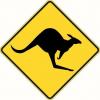
Originally Posted by
Derek Cohen

Everyone to their own method. I use a shooting board every time a drawer front, back are sides are sized and fitted. Similarly, in situations where pieces need to be planed with precision, it is handy - not essential .. nothing is - to use a shooting board. I do not own a chop saw, and likely never will, and even a crosscut table on a slider will not achieve the precision that a shooting board can.
Regards from Perth
Derek
I'm making crosscuts on the Ulmia tablesaw and the Omga chopsaw that I verify for squareness with a precision (hand scraped) angle block and surface plate. They're perfect and repeatable. Especially so in the size range of most drawers.
I'm not a shooting board fan in recent years, I'd much rather plane end grain in a vise.
Bumbling forward into the unknown.




 Reply With Quote
Reply With Quote





